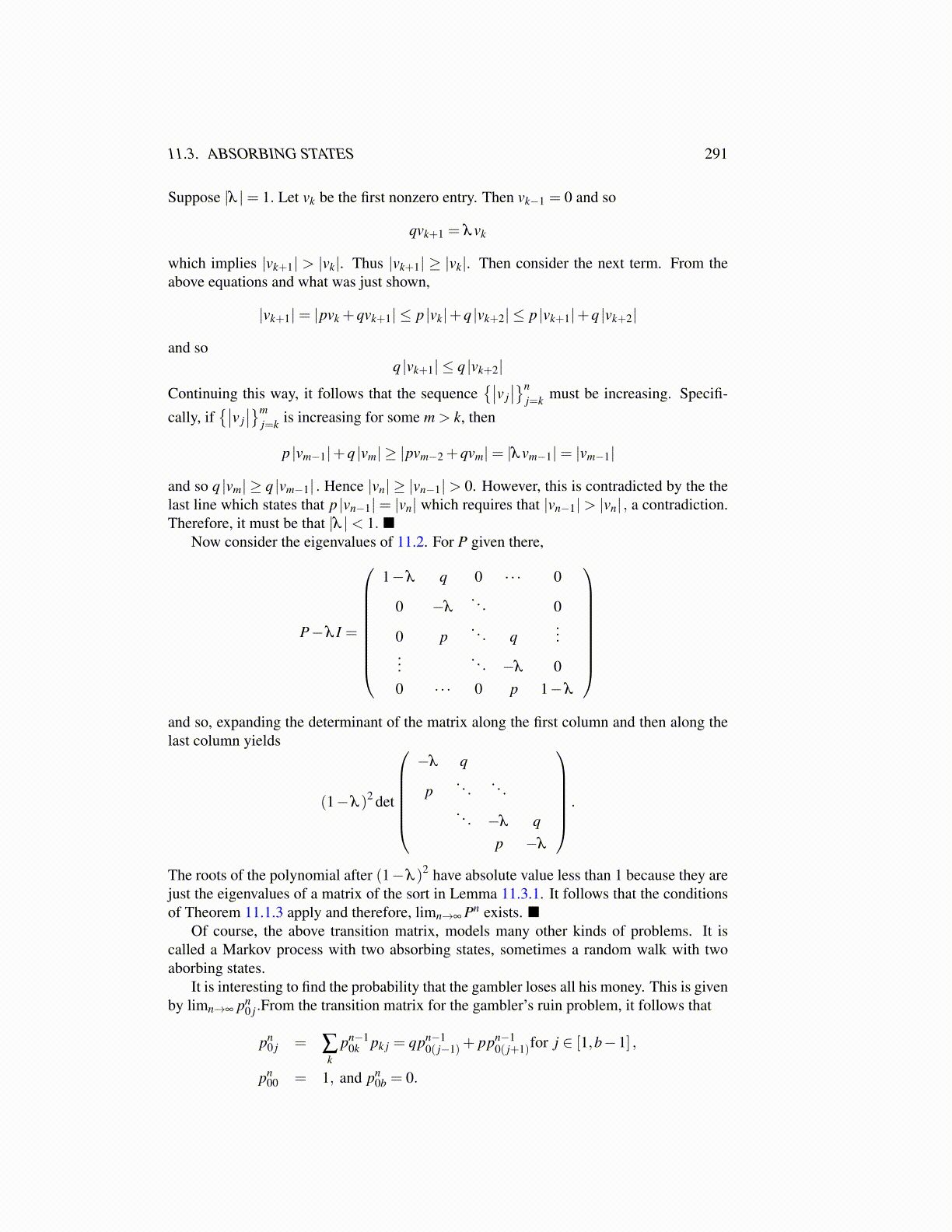
11.3. ABSORBING STATES 291
Suppose |λ |= 1. Let vk be the first nonzero entry. Then vk−1 = 0 and so
qvk+1 = λvk
which implies |vk+1| > |vk|. Thus |vk+1| ≥ |vk|. Then consider the next term. From theabove equations and what was just shown,
|vk+1|= |pvk +qvk+1| ≤ p |vk|+q |vk+2| ≤ p |vk+1|+q |vk+2|
and soq |vk+1| ≤ q |vk+2|
Continuing this way, it follows that the sequence{∣∣v j
∣∣}nj=k must be increasing. Specifi-
cally, if{∣∣v j
∣∣}mj=k is increasing for some m > k, then
p |vm−1|+q |vm| ≥ |pvm−2 +qvm|= |λvm−1|= |vm−1|
and so q |vm| ≥ q |vm−1| . Hence |vn| ≥ |vn−1|> 0. However, this is contradicted by the thelast line which states that p |vn−1|= |vn| which requires that |vn−1|> |vn| , a contradiction.Therefore, it must be that |λ |< 1. ■
Now consider the eigenvalues of 11.2. For P given there,
P−λ I =
1−λ q 0 · · · 0
0 −λ. . . 0
0 p. . . q
......
. . . −λ 00 · · · 0 p 1−λ
and so, expanding the determinant of the matrix along the first column and then along thelast column yields
(1−λ )2 det
−λ q
p. . . . . .. . . −λ q
p −λ
.
The roots of the polynomial after (1−λ )2 have absolute value less than 1 because they arejust the eigenvalues of a matrix of the sort in Lemma 11.3.1. It follows that the conditionsof Theorem 11.1.3 apply and therefore, limn→∞ Pn exists. ■
Of course, the above transition matrix, models many other kinds of problems. It iscalled a Markov process with two absorbing states, sometimes a random walk with twoaborbing states.
It is interesting to find the probability that the gambler loses all his money. This is givenby limn→∞ pn
0 j.From the transition matrix for the gambler’s ruin problem, it follows that
pn0 j = ∑
kpn−1
0k pk j = qpn−10( j−1)+ ppn−1
0( j+1)for j ∈ [1,b−1] ,
pn00 = 1, and pn
0b = 0.